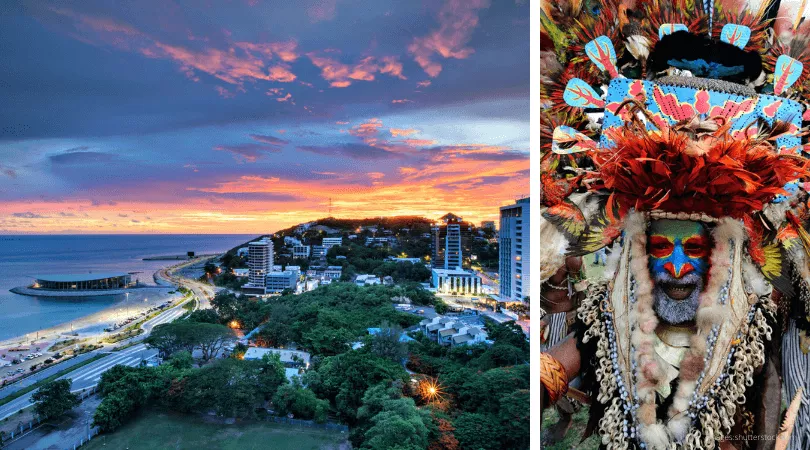Papua New Guinea

-
Location: Papua New Guinea is a country located in the southwestern Pacific Ocean, occupying the eastern half of the island of New Guinea.
-
Biodiversity: Papua New Guinea is one of the most biodiverse places on Earth, with rainforests, coral reefs, and unique wildlife. It is home to over 800 languages and more than 7% of the world’s biodiversity.
-
Indigenous Cultures: Papua New Guinea has a rich cultural heritage, with hundreds of distinct indigenous groups. Each group has its own language, customs, and traditions, including unique art, music, and dance forms.
-
Mount Wilhelm: The highest peak in Papua New Guinea is Mount Wilhelm, standing at an elevation of 4,509 meters (14,793 feet). It offers stunning views and is a popular destination for hikers and mountaineers.
-
Sing-Sing Festivals: Sing-sing festivals are vibrant cultural celebrations where different tribes showcase their traditional dances, costumes, and music. These festivals are a fantastic way to experience the diverse cultures of Papua New Guinea.
-
Volcanoes: Papua New Guinea is located on the Pacific Ring of Fire, and as a result, it has many active volcanoes. The most famous one is Mount Tavurvur, which erupted spectacularly in 1994 and is located near the town of Rabaul.
-
The Sepik River: The Sepik River is one of the longest rivers in Papua New Guinea. It is vital for transportation and is surrounded by dense rainforests. The Sepik River is also famous for its traditional art and carvings.
-
Coral Reefs: Papua New Guinea is known for its stunning coral reefs, which are home to a wide variety of marine life, including colorful fish, turtles, and vibrant coral formations. Snorkeling and diving in these reefs is a popular activity.
-
Birds of Paradise: Papua New Guinea is the natural habitat of numerous species of Birds of Paradise. These birds are known for their colorful feathers and unique courtship displays.
-
Traditional Houses: In many parts of Papua New Guinea, traditional houses called “haus tambarans” can be found. These houses serve as community gathering places and are often decorated with intricate carvings and designs.

